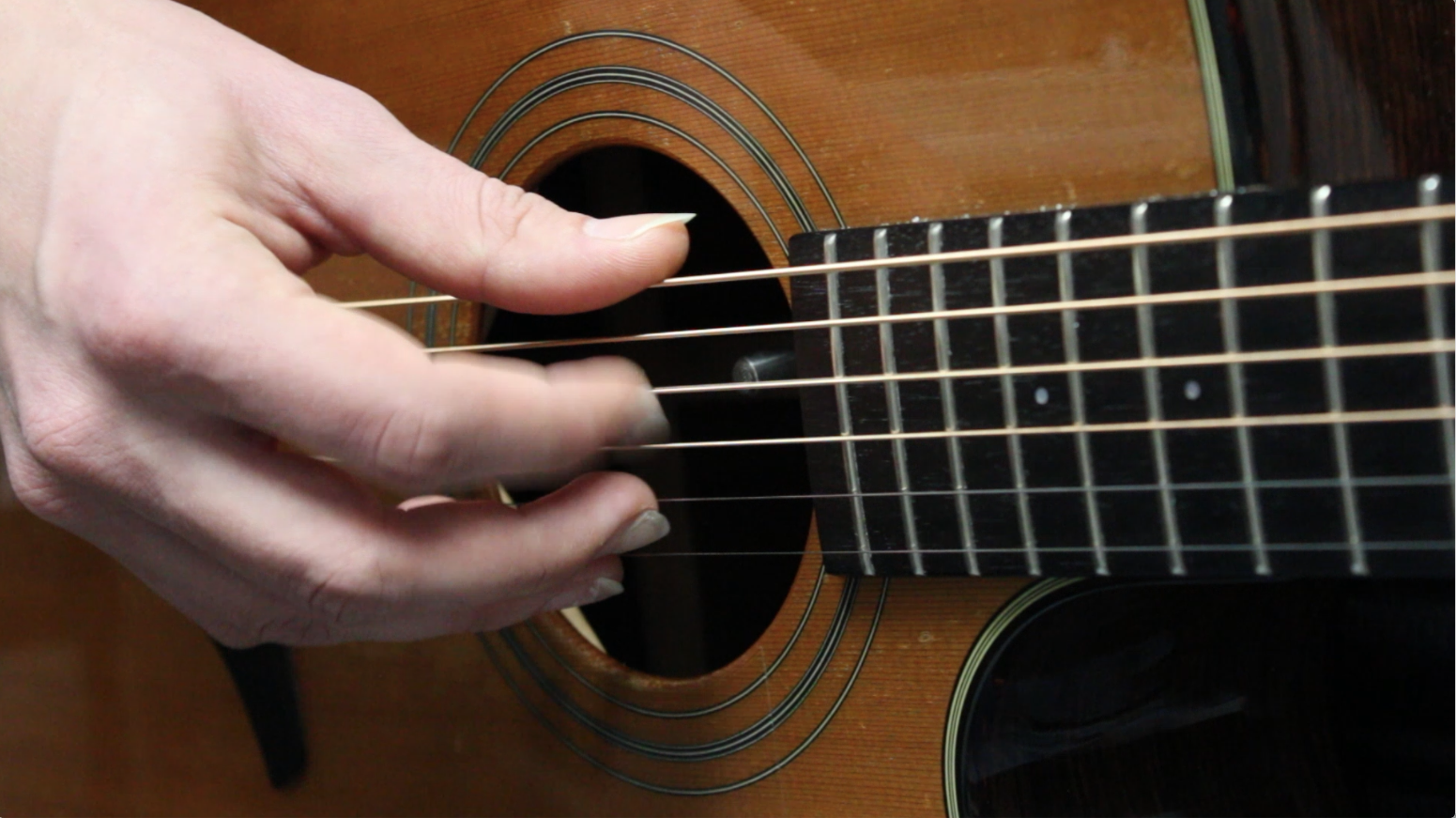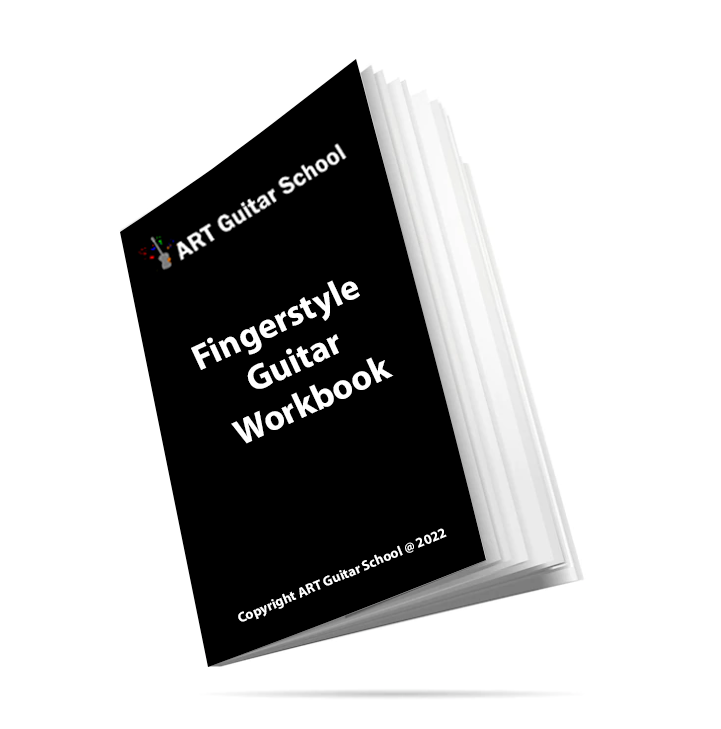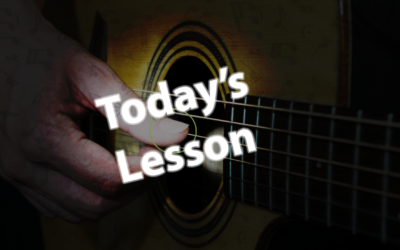FINGERPICKING KEY

The right hand:
P = Thumb
I = Index
M = Middle
A = Ring
Fingerpicking Pattern No. 1
This is the most essential fingerpicking pattern to start with. It requires no left hand chord or fretted notes. It is used in many popular fingerpicking songs and some songs are slight variations of this same pattern.
We have all open strings being plucked in sequential order. Each note is a quarter note in duration and will last exactly one second each if played at 60bpm.
Lets get to playing!
We will pluck each open string in order starting from the 6th string (Low E) and ending on the 1st (High E).
Step 1. Lets start with thumb (p) and pluck the 6th-4th string
Step 2. Pluck index (i), middle (m) and ring (a) on the 3rd-1st strings.

Here is a video demonstration of the finger picking pattern:
If you were having trouble please contact us and we will help you!
FOLLOW US ON
Get our FREE Fingerstyle Workbook!
RELATED BLOG POSTS
Building Your Fingerstyle Guitar Repertoire: Top 5 Must-Learn Songs
Every fingerstyle guitarist should have a repertoire of essential songs. Here are five must-learn pieces that every player should know, along with insights into the techniques used.
1. “Blackbird” by The Beatles
A classic piece that combines melody and harmony beautifully.
Techniques: Fingerpicking patterns and chord inversions.
2. “Dust in the Wind” by Kansas
A beautiful song that’s perfect for practicing arpeggios.
Techniques: Arpeggiated chords and dynamic playing.
3. “Tears in Heaven” by Eric Clapton
An emotional piece that showcases fingerstyle techniques.
Techniques: Melody and harmony integration.
4. “Fast Car” by Tracy Chapman
A modern classic that offers a challenge for intermediate players.
Techniques: Alternating bass and intricate picking.
5. “Scarborough Fair” (Traditional)
This folk song is perfect for fingerstyle arrangements.
Techniques: Use of harmonics and varied dynamics.
Conclusion
Building a solid repertoire is essential for any fingerstyle guitarist. These five songs will not only enhance your playing but also give you a foundation to explore new musical ideas. Happy playing!
Exploring Alternate Tunings for Fingerstyle Guitar: Unlock New Sounds
Alternate tunings can dramatically change the sound of your guitar and enhance your fingerstyle playing. Here’s an exploration of various tunings and tips on how to adapt familiar songs to these tunings.
1. DADGAD Tuning
This tuning is popular for folk and Celtic music, offering a rich, resonant sound.
Tip: Experiment with open strings to create unique voicings.
2. Drop D Tuning
By lowering the sixth string to D, you can play powerful bass lines while maintaining familiar chord shapes.
Tip: Try playing songs like “Whole Lotta Love” in this tuning.
3. Open G Tuning
This tuning allows for easy slide playing and a distinct sound.
Tip: Use this tuning for blues and slide guitar.
4. C6 Tuning
Often used in Hawaiian music, C6 tuning opens up new chord possibilities.
Tip: Experiment with this tuning for a different flavor in your playing.
Conclusion
Exploring alternate tunings can enhance your fingerstyle playing and inspire new musical ideas. Don’t hesitate to experiment and adapt songs to make them your own!
The Best Fingerstyle Guitar Songs for Intermediate Players: Challenge Yourself!
As an intermediate player, challenging yourself with more complex fingerstyle pieces is essential for growth. Here’s a curated list of songs that will test your skills and expand your repertoire.
1. “Classical Gas” by Mason Williams
This instrumental piece features intricate fingerpicking and dynamic changes.
Link to Tutorial: [Link]
2. “Cannon in D” by Pachelbel (arranged by various artists)
A classical piece with beautiful harmonies, perfect for fingerstyle.
Link to Tutorial: [Link]
3. “Fast Car” by Tracy Chapman
This song’s fingerpicking pattern is both challenging and rewarding.
Link to Tutorial: [Link]
4. “Blackbird” by The Beatles
A classic that offers a great mix of melody and harmony.
Link to Tutorial: [Link]
5. “Tears in Heaven” by Eric Clapton
A beautiful ballad with emotional depth and challenging fingerstyle elements.
Link to Tutorial: [Link]
Conclusion
These intermediate-level fingerstyle songs will challenge your skills and help you grow as a musician. Take your time with each piece, and enjoy the learning process!




0 Comments